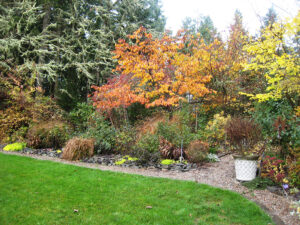
Fall is a brilliant time for planting. The ground is still warm enough to encourage root growth, and the fierce battering of summer heat has lifted, which means less work for you. But there’s another reason autumn is the best time for both new plantings and the shaping of certain woody plants, either in the ground, or in preparation for moving them back into the greenhouse for the coming colder season.
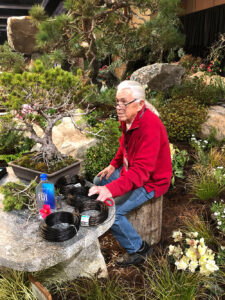
In fall, plants are not as quick to put on new growth in response to planting or pruning. It has to do with how they use their energy throughout the year. I learned this neat factoid from Dan Robinson, owner of Elandan Gardens in the Puget Sound near Seattle. He’s a bonsai expert extraordinaire, who each sets up award-winning displays at the Northwest Flower & Garden Festival. That’s where I met him, on the show floor.
He always sits in his display garden with whatever bonsai he’s working on placed on a table in front of him. He instructs those who come by in what he is doing, and how he is doing it, crafting ancient trees in miniature, always seeking the most natural and dramatic form. (For more on his unique bonsai vision, visit his website.)
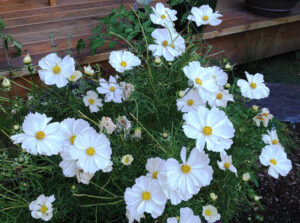
Part of his meticulous observations of nature includes the yearly cycles of how plants move their energy around. This movement has to do with the Summer Solstice (June 21). Whether you choose to celebrate it or not, plants do. Up until about a month after the summer solstice, Dan tells the crowd gathered around him on the show floor, plants of all kinds put their energies into upward and outward growth—trunks, branches, and leaves. After that July date, with the shift of the sun, they move their energy back down, supporting their roots for the coming change of seasons.

Because of that downward movement, “If you prune a fruit tree in July, you will have much less sucker growth in response to the cuts,” Dan says. “That way you get a longer time without the plant putting energy into producing growth that will have to be removed later. It’s more efficient.”
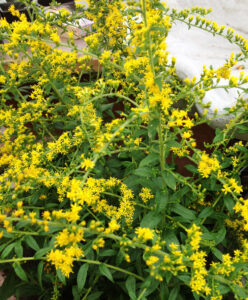
But wait, aren’t fruit trees traditionally pruned without their leaves in late winter? Dan also knows his gardening history. “Late winter is the time when workers—we’re talking back to the Middle Ages here—have fewer tasks,” he tells us. “It makes sense to keep them busy. And you can see the structure better when you don’t have the leaves.”
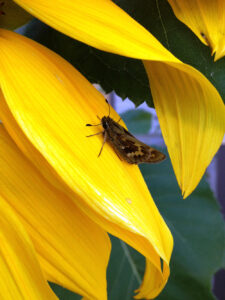
Late winter still may be the time you prefer to trim your trees, but knowing about what is happening unseen with root proliferation in fall means that the plants you choose to add to your garden now will have a much better start for next year’s spring, even though you’re not seeing much top growth.
And by pruning and shaping in September, you make life easier for yourself next year. This is true for plants in the ground, or for those in containers that have gotten too summer-exuberant but must be taken back into the greenhouse.

The only caveat for pruning is to know which plants have already formed their flower buds on this year’s summer growth—certain hydrangeas (macrophylla and quercifolia, for instance) should not be cut now. You usually can see the buds that are forming on the woody stems. And for roses in colder climes, refrain from cutting the hips as a signal that tells the rose it must prepare for the coming cold. But for plants that form blooms next year, or where flowers are not an issue, such as conifers or red-twig dogwoods, go right ahead and shape them now.
And seek out those late-blooming perennials that the nurseries are offering now, such as asters, goldenrod, and anemone. You’ll know you’re working with the plants’ own subtle cycles of growth and dormancy. Thanks, Dan.











